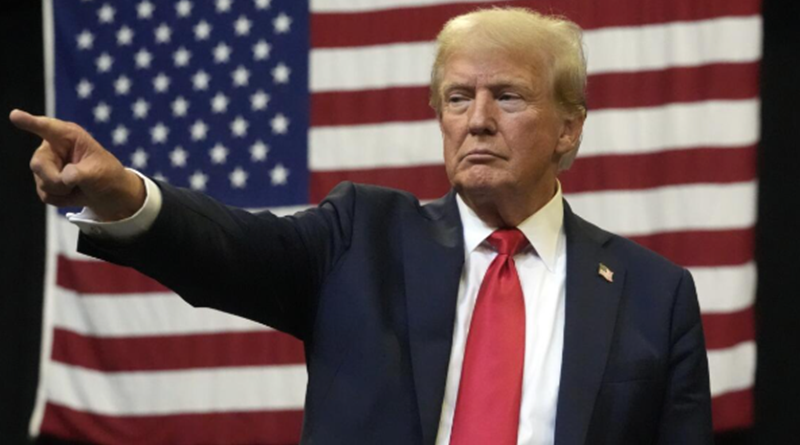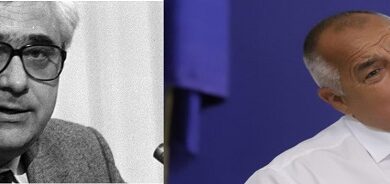The Limits of Trump’s New Gunboat Diplomacy
Trump Reveals His True Face?
Since February 1, Donald Trump has begun showcasing his supposedly true self through the introduction of new tariffs and the candid statements of his representatives, including Secretary of State Marco Rubio, regarding Ukraine. His actions follow a certain logic, but it remains unclear whether they effectively balance short-term and long-term consequences—or if they are grounded in a coherent grand strategy that aligns opportunities with realities.
This strongly resembles the gunboat diplomacy of past centuries, when the U.S. and other powers used military force to expand their markets. This time, threats of crippling tariffs precede the possibility of other forms of coercion, with military force not entirely ruled out even against allies.
The tariff diplomacy makes sense only if it is part of a negotiation strategy—but there are no visible negotiations on the horizon. If they are happening, they are so far behind the scenes that they cannot counteract the media waves created by the “shoot first, talk later” approach. After yesterday’s information bomb about the Gaza sector—supposedly to be acquired by America—followed by another shocking announcement, the public is in a state of disbelief. Yet, shock wears off, and eventually, reality and net present values take precedence. If a gap emerges between Trump’s declarations and his actual achievements, the backlash will be severe.
His unpredictability will cease to have the desired paralyzing effect; partners and opponents alike will simply start planning for the worst-case scenario when dealing with his administration.
Retaliation from Affected Countries
Initial reactions have been measured but resolute. Canadian and Mexican leaders, despite their dependence on exports to the US, cannot afford the public humiliation Trump is subjecting them to. The EU and China will undoubtedly respond with countermeasures. Once trade wars erupt, even if halted later, they inflict irreversible damage on the international system.
Support Independent Analysis
Help us keep delivering free, unbiased, and in-depth insights by supporting our work. Your donation ensures we stay independent, transparent, and accessible to all. Join us in preserving thoughtful analysis—donate today!
If Trump had a well-thought-out strategy, he would have combined pressure with diplomatic maneuvers. Instead, he is attacking everyone simultaneously and indiscriminately. This is generating a flurry of media spectacle that, at some point, will simply numb public perception—including its ability to distinguish what is truly serious. Rather than leveraging success on multiple fronts to reinforce his position, the shock and stress may instead forge unexpected alliances among those he has alienated.
Ukraine – A Test of Pressure Limits
Within this context, U.S. Special Envoy for Ukraine, Keith Kellogg, stated that Ukraine must hold elections by the end of the year—a demand that aligns perfectly with Putin’s interests. The reaction from Kyiv was swift and unequivocal: both Zelensky and the main opposition leader Poroshenko rejected the proposal, calling it a “gift to Putin.”
This signals that Ukraine is now drawing its own red lines and will not allow Trump to negotiate its future behind its back. While Kyiv will continue to court Trump, flatter him, and propose deals, when it comes to national security and core interests, the American president will receive a polite but firm refusal.
What Unites Tariffs and Ukraine Policy?
In both cases, Trump applies pressure without prior engagement or a necessary phase of diplomatic groundwork. His approach to the EU, Canada, and China lacked preliminary testing of reactions or fine-tuning of strategy—resulting in growing resistance rather than dominance.
A similar pattern is visible in the technological race. The U.S. President dropped a ‘bombshell’ with the planned investment of $500 billion in artificial intelligence to ensure global supremacy under Trump, yet China responded asymmetrically with the DeepSeek AI project—achieving better cost-benefit efficiency. Even considering potential propaganda value from Beijing, the world will continue to resist unilateral pressure, despite each state lacking America’s resources. When you are not the biggest, you can be more agile and adaptable.
Trade wars, in the form of gunboat diplomacy, are a double-edged sword and pose significant risks—especially when not accompanied by adequate diplomatic efforts. If a product has a market and a buyer with no quick substitute, tariffs will only make it more expensive, fueling inflation and harming American consumers.
It is an illusion to think that the U.S. can become a self-sufficient autarky and thrive without imports from Canada, Mexico, and the EU—or that imposing tariffs will automatically attract investors from these countries to American soil. Trump’s real goal may not be just pressuring foreign nations but also consolidating power domestically—reshuffling business and wealth in favor of his inner circle.
Ultimately, history will judge Trump by his legacy. As he pursues the noble goal of making America great again, he risks making it more vulnerable and weaker instead.
The road to hell is paved with good intentions.




